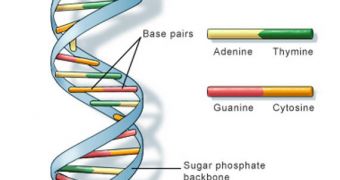The question of how proteins inside the brain know exactly where to bind has had experts scratching their head since the mechanism was first discovered. There are those proteins who travel to a brain cell's axon, and those who travel to the dendrites, but how do proteins know where to differentiate, and which road to pick to get to their respective destinations? A new study, conducted by University of Southern California (USC) College computational biologist Don Arnold, reveals this mystery in detail.
“There’s no little man sitting there, putting the protein in the right place. Proteins have to have in them encoded information that tells them where to go in the cell,” Arnold says, as quoted by ScienceDaily. He explains that proteins travel inside the cells in tiny sacks, known as vesicles. These vesicles are powered by motors known as kinesins, which force the ensembles to travel on small molecular paths. However, some types of proteins need to get to the dendrites, the input spot for neurons, while others have to get to axons, which are the points through which the information exits the brain cells.
Arnold's team has evidenced a crude, but highly effective mechanism that the vesicles employ in order to ensure that they only reach their correct destinations. The experts argue in a new study that appeared this week in the journal Nature Neuroscience that kinesins act indiscriminately and take all of their cargo to the axons, including the proteins that are meant to reach the dendrites. After the axon-bound cargo is unloaded from the vesicles, the remaining proteins enable the vesicle to bind with a second motor-substance, known as myosin, which can only bind to the dendrites.
The process is recurrent, the experts explain, which means that, if, by some accident, dendritic proteins escape into the axon, the myosin can literally fish them out and carry them to their rightful place. Once in the dendrites, the proteins can either bind to them, and carry out their task, or they can escape back into the axon. The myosin motor performs the cleaning operations as many times as it takes, in a process that could be labeled as highly inefficient. Still, Arnold says that the entire mechanism is very effective in doing its job.

 14 DAY TRIAL //
14 DAY TRIAL //